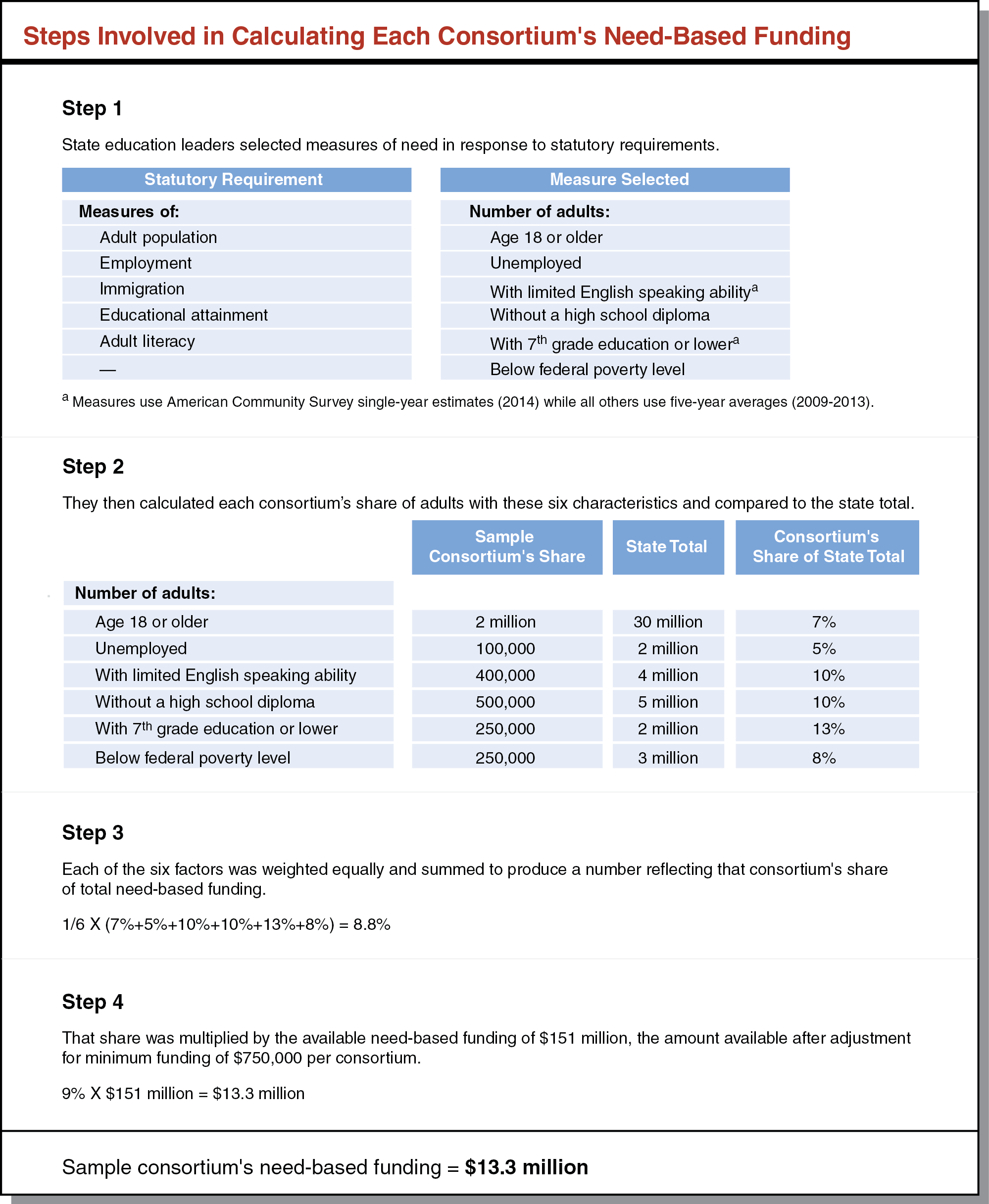January 6, 2016
What Is the Adult Education Block Grant?
Chapter 13 of 2015 (AB 104, Committee on Budget), created the Adult Education Block Grant (AEBG). The 2015-16 Budget Act provided $500 million in ongoing Proposition 98 funding for the block grant. The state provided this funding to further a restructuring of adult education services begun in 2013. Under the restructuring, adult education providers formed regional consortia to improve coordination and better serve the needs of adult learners within each region.
What Are Adult Education Regional Consortia?
Adult education providers have formed 71 regional consortia with boundaries that coincide with community college district service areas. Formal membership in consortia is limited to school and community college districts, county offices of education (COEs), and joint powers agencies (JPAs). Each formal member is represented by a designee of its governing board. With input from other adult education and workforce service providers (such as local libraries, community organizations, and workforce investment boards), the consortia have developed regional plans to coordinate and deliver adult education in their regions. Only formal consortia members may receive AEBG funding directly. A formal member, however, may pass through AEBG funding to other adult education providers if called for in the regional plan.
For What Instructional Areas May Consortia Use Block Grant Funds?
State law authorizes consortia to use block grant funds for programs in seven adult education instructional areas:
-
Elementary and secondary reading, writing, and mathematics (basic skills).
-
English as a second language and other programs for immigrants.
-
Workforce preparation for adults (including senior citizens) entering or re-entering the workforce.
-
Short-term career technical education with high employment potential.
-
Preapprenticeship training activities coordinated with approved apprenticeship programs.
-
Programs for adults with disabilities.
-
Programs designed to develop knowledge and skills that enable adults (including senior citizens) to help children to succeed in school.
How Is Each Consortium’s Funding Determined?
The 2015-16 Budget Act provided $500 million in ongoing Proposition 98 funding to regional consortia in two parts: (1) maintenance of effort (MOE) funding and (2) need-based funding. Under the MOE part, up to $375 million was earmarked for school districts and COEs that operated adult education programs in 2012-13 and subsequently became members of regional consortia. Each of these providers received the same amount of funding in 2015-16 as it spent on adult education in 2012-13 (effectively functioning as a hold harmless provision). Under the need-based part, at least $125 million was designated for regional consortia to distribute to members based on each region’s share of the statewide need for adult education as determined by the California Community College Chancellor, Superintendent of Public Instruction, and Executive Director of the State Board of Education. In determining need, statute requires these leaders to consider, at a minimum, measures related to adult population, employment, immigration, educational attainment, and adult literacy.
Beginning in 2016-17, state education leaders will distribute block grant funding based on (1) the amount allocated to each consortium in the prior year, (2) the consortium’s need for adult education, and (3) the consortium’s effectiveness in meeting those needs. If a consortium receives more funding in a given year than in the prior year, each member of the consortium will receive at least as much funding as in the prior year.
How Did State Education Leaders Calculate Need-Based Funding in 2015-16?
To measure each region’s need for adult education and distribute need-based funding accordingly, state education leaders followed four steps, as shown in the figure. First, they selected six demographic variables to measure need in response to statutory requirements. They collected the corresponding data from the American Community Survey, a statistical survey conducted by the U.S. Census Bureau. Next, for each of the six demographic characteristics, they calculated each region’s share of the state total. For example, they calculated the number of unemployed adults in each region as a percent of the state’s total number of unemployed adults. Third, they obtained a composite measure of each region’s need for adult education by adding together the region’s shares for each of the six variables and weighting each variable equally. Fourth, they multiplied each region’s composite measure by the amount of need-based funding available to determine the region’s need-based funding.

